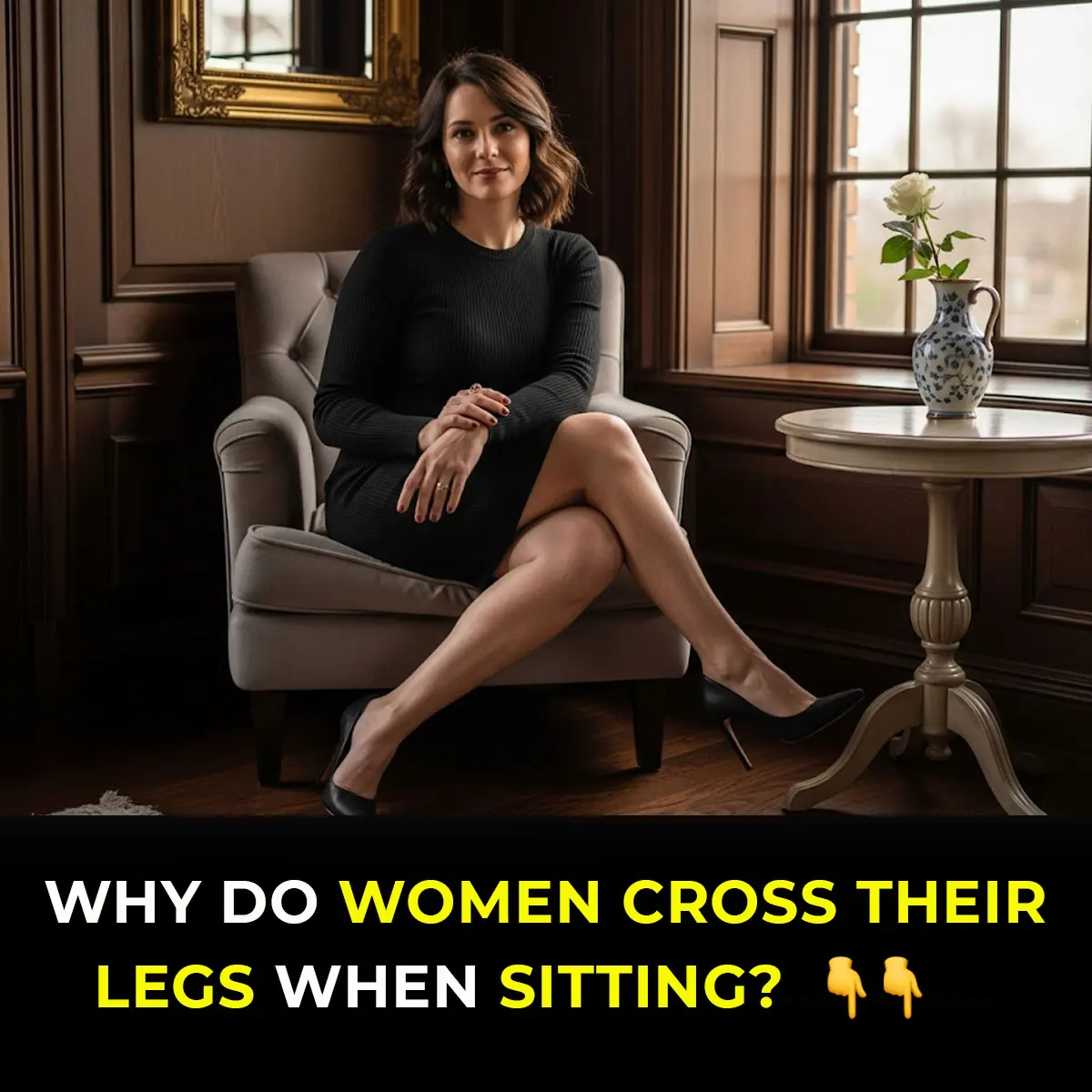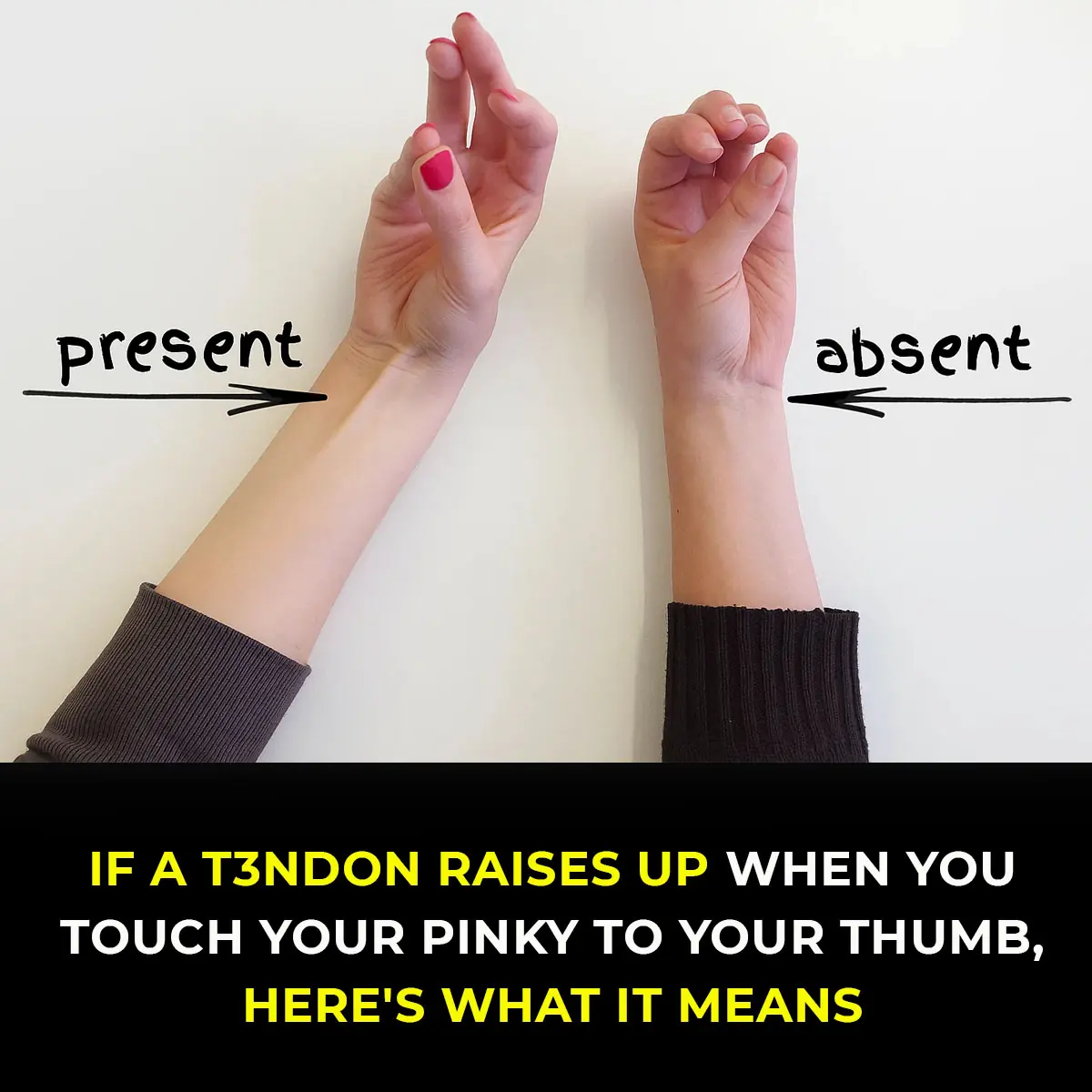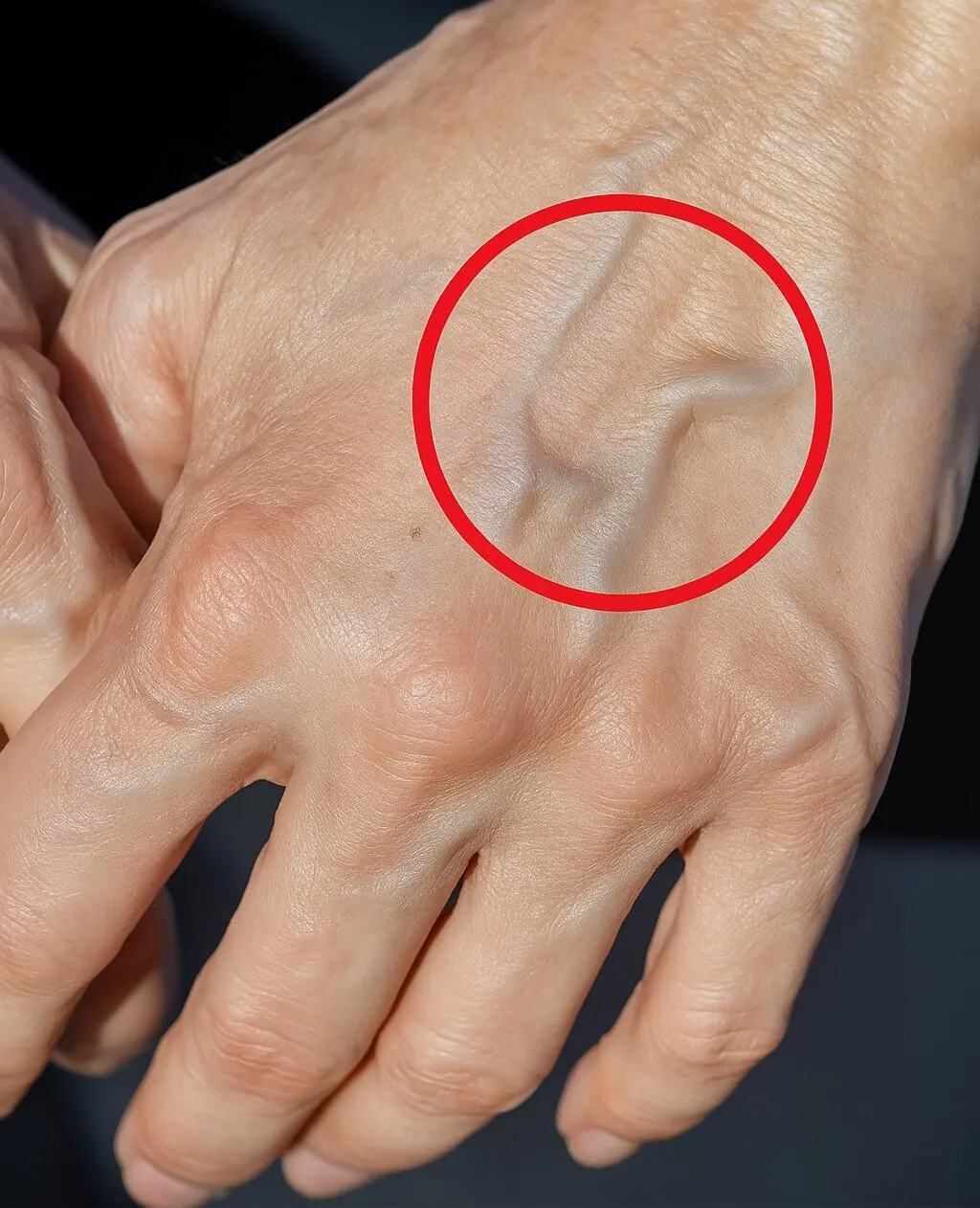
The Hidden Meaning Behind Leg-crossing — It’s More Than Just Comfort

We often sit with our legs crossed without giving it much thought, but did you know that this posture can convey various messages depending on your body language? Some crossed-leg positions help maintain modesty, while others can make you appear more attractive and indicate interest in someone. This article explores why people cross their legs, whether it’s an attractive stance, the potential health risks of frequent leg crossing, and more.
Why People Cross Their Legs
Comfort
Crossing our legs is a common way for both men and women to feel more comfortable. This position relieves fatigue in the torso muscles and alleviates pressure on soft tissues. Additionally, it stabilizes the lower extremities, such as the feet, ankles, and legs.
Some comfortable ways to cross your legs include the crisscross applesauce position, crossing one foot behind your buttocks, or crossing at the knees.
Confidence
Leg-crossing can signal confidence. For example, men often place their ankle on the opposite knee or thigh in a figure-four pose. Similarly, women tend to point their top foot outward when crossing their legs, as opposed to tucking it back.
Elegance
Women, especially those in the public eye, like Princess Kate Middleton and Duchess Meghan Markle, often cross their legs at the ankles to convey elegance and grace. For a more refined posture, one can cross their legs and then gently slide them backward toward the chair's edge.
Relaxation
A person crossing their legs, regardless of the setting or company, can be a sign of relaxation and contentment. Uncrossing the legs could indicate they are preparing to leave or simply need a change of position. The posture’s meaning can vary based on the context.
Modesty
When wearing a short dress or miniskirt, many women cross their legs at the knees or ankles to maintain modesty. Men also cross their legs at the knees to appear more calm and less imposing. However, men may avoid crossing at the knees as it can cause discomfort in the crotch area.
Why Do People Cross Their Legs While Standing?
Crossing your legs while standing helps alleviate foot and leg fatigue. After standing for a long time, you may find yourself raising one foot, resting only on your toes. This position redistributes weight and reduces strain on each leg without the need to sit.
Standing with crossed legs can also enhance a woman’s silhouette, giving her a modest, petite appearance that complements her attire. Models and influencers often adopt this stance for its ability to create the illusion of a slimmer frame.
Does Crossing Legs Toward You Mean Someone Likes You?
When someone crosses their legs in your direction, it may signal interest. If their knee or foot is pointed toward you in a crowded space, it could indicate they want your attention or are subtly flirting. This gesture can convey interest, whether romantic, platonic, or professional. However, it might also be a simple accident or a casual position with no hidden meaning.
Is Sitting with Your Legs Crossed Attractive?
For many people, women crossing their knees is an attractive pose. This stance not only shows off the legs but also allows women to either tuck the upper foot back or point it outward, which can be very seductive. One iconic example of a leg-crossing pose is Sharon Stone’s famous interrogation scene in Basic Instinct.
Certain crossed-leg postures, like the Figure 4 pose, are considered alluring. However, one's attitude while sitting plays a crucial role in making the pose appealing. If someone comes off as anxious or arrogant, it can diminish the allure.
On the other hand, crossing ankles suggests secrecy, which may not be as appealing.
Is Sitting Cross-Legged Bad for Your Health?
While sitting cross-legged is common, it does have potential downsides, particularly for joint health. Prolonged periods of crossing legs can lead to circulation problems, poor posture, back pain, nerve compression, and joint discomfort. It can impede blood flow, causing vein irritation and increasing blood pressure. This posture may also lead to spinal misalignment and nerve compression, leading to tingling sensations.
However, some studies suggest that sitting cross-legged can improve joint stability and reduce muscle fatigue. Despite these benefits, the hip flexion and spinal rotation required for this sitting position can lead to long-term misalignment when compared to sitting upright.
In conclusion, while crossing your legs may offer comfort and convey confidence or elegance, it’s important to be mindful of the potential health risks if done frequently.
News in the same category


The Truth About Eating the Black Vein in Shrimp Tails

This is why you should keep the bathroom light on when sleeping in a hotel
Leaving your hotel bathroom light on at night might seem unnecessary, but it could be a small habit that makes a big difference for your comfort and safety. From preventing nighttime accidents to deterring intruders, experts say this simple tip can protec

The Mystical Gaboon Viper, Master Of Disguise And Deadly Accuracy

If You See Square Waves Forming In The Ocean, Get Out Of The Water Immediately

A Greenland Shark Born in 1620 is Still Alive Four Centuries Later

15 Things You Should Never Plug Into A Power Strip

China is Developing a Levitating Train That Could Travel From New York to Chicago in Just Two Hours

The world’s oldest woman, who lived to 117, ate the same meal every day throughout her life
Emma Martina Luigia Morano, the world’s oldest woman at the time of her passing, credited her extraordinary 117 years of life to a mix of genetics, resilience, and one very peculiar daily diet. Her remarkable story spans two World Wars, personal tragedy

TikTok’s ‘Vabbing’ Trend Sparks Debate: Does It Attract Partners?

In Sweden, You’re Not Allowed to Leave Your Dog Alone for More Than Six Hours, Here’s the Reason

A A tendon raises up when you touch your pinky to your thumbraises up when you touch your pinky to your thumb

The Sh0cking Truth Behind Your Ankle Bracelet And What It Reveals About You — It’s More Than Just Jewelry
For many, an ankle bracelet is just a delicate, eye-catching piece of jewelry. But behind its shimmer lies a rich tapestry of history, tradition, and hidden symbolism that stretches across cultures and centuries.

Lost Underwater City Near Noah’s Ark Site Could Rewrite Biblical History Forever
The discovery of an underwater city found by the 'resting place of Noah's Ark' is a revelation that may lead to the Bible story being re-written.

11 Heartbreaking Yet Essential Signs Your Dog May Be Nearing the End — And How to Give Them Comfort Until the Last Moment
When you notice these signs, your role transforms from caregiver to emotional anchor. This is the time to be fully present — offering touch, reassurance, and unconditional love.

Harvard Professor Warns: Object Heading Toward Earth Could Be Something Beyond Nature
A massive interstellar object, 3I/ATLAS, is racing toward Earth, and one Harvard astrophysicist believes it may not be natural. With missing comet features and a suspicious trajectory, experts are now debating whether it could be an engineered spacecraft.

Mass Panic as ‘New Baba Vanga’ Predicts Majo Disasters Striking in Just One Month
A chilling prophecy from Japan’s so-called “New Baba Vanga” has triggered widespread fear and mass trip cancellations. Tourists are now abandoning travel plans as the forecast warns of a catastrophic natural disaster hitting in early July 2025.

What Is SPAM Meat? History, Origin, Ingredients, and How It Became a Global Food Icon
SPAM — the world-famous canned meat — has been sold over 8 billion times and is loved in more than 40 countries. From its humble beginnings during the Great Depression to its role in World War II, here’s the complete story of SPAM’s origin, ingred

Scientists Reverse Aging of a 53-Year-Old’s Skin Cells to That of a 23
News Post

10 Symptoms That May Reveal Health Problems

Experts warn: Don’t swap your oven for an air fryer

Get Rid of Throat Mucus Faster With These Home Treatments (Evidence Based)

Clear Throat Mucus Fast With These Tried-and-Tested Remedies They Don’t Want You to Know

9 Warning Signs of Magnesium Deficiency You Shouldn't Ignore

Poor Postcancer Surgery Outcomes Tied to 3 Factors

Teamwork Boosts Primary Care Doc Job Satisfaction, Cuts Stress

HIV Was Successfully Eliminated from Human Immune Cells Using CRISPR Gene Editing in Landmark Study

Scientists Discover An “Off Switch” For Cholesterol—And It Could Save Millions Of Lives

How to Treat Urinary Tract Infection (UTI) Naturally According to Science

4 Common Causes of Body Pain on the Right Side

The Truth About Eating the Black Vein in Shrimp Tails

12 Subtle Vitamin D Deficiency Symptoms That Most People Ignore

What Your Heart Experiences When You Drink Energy Drinks

How to Eat Right for Your Blood Type

Eyes Full of Hope, Heart Full of Trust.

When to Worry About Veins That Appear Out of Nowhere

This is what sleeping on the left side does for our brain, stomach & glymphatic health
Sleeping position might be the last thing you think about before bed, but it can have a powerful impact on your health. Experts say that lying on your left side could improve digestion, support brain detox, ease back pain, and even enhance circulation.

I Haven’t Seen My Daughter in 13 Years — Then a Letter Arrived from a Grandson I Never Knew

This is why you should keep the bathroom light on when sleeping in a hotel
Leaving your hotel bathroom light on at night might seem unnecessary, but it could be a small habit that makes a big difference for your comfort and safety. From preventing nighttime accidents to deterring intruders, experts say this simple tip can protec